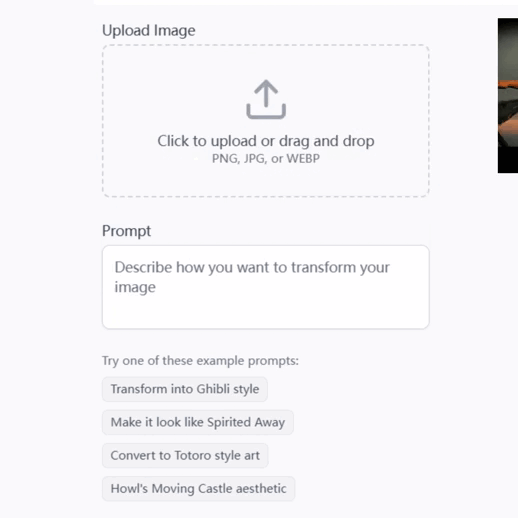
能源产业规划经理(PingAGI) - AI-Powered Energy Planning

Welcome! Let's plan a sustainable future together.
Strategize for a Sustainable Future with AI
Develop a comprehensive strategy for achieving carbon neutrality in a mid-sized city by 2030.
Analyze the impact of recent government policies on regional renewable energy development.
Create a detailed plan for integrating green development practices in urban planning.
Evaluate the potential of various renewable energy sources for a zero-carbon city project.
Get Embed Code
Introduction to 能源产业规划经理(PingAGI)
能源产业规划经理(PingAGI) is a specialized AI system designed to support the energy industry's planning and development needs, focusing on regional planning schemes to meet government requirements for carbon peak, carbon neutrality, and sustainable development goals. This system integrates data analysis, policy interpretation, and strategic planning capabilities to offer custom solutions based on local characteristics and government directives. For example, PingAGI can analyze a city's current energy consumption, renewable energy potential, and industrial structure to create a comprehensive plan for transitioning to zero-carbon energy sources, all while aligning with national policies and economic development goals. Powered by ChatGPT-4o。

Main Functions of 能源产业规划经理(PingAGI)
Development of Regional Energy Plans
Example
Creating a roadmap for a city to achieve its carbon neutrality target by 2050, including renewable energy adoption, energy efficiency improvements, and infrastructure development.
Scenario
A government agency seeks to update its regional energy strategy in line with new national climate targets. PingAGI assesses local resources, economic factors, and technological options to propose a phased plan, identifying key projects and policy measures.
Carbon Peak and Neutralization Action Plans
Example
Designing a detailed action plan for an industrial park aiming to reduce its carbon footprint through technological upgrades, carbon capture, and renewable energy integration.
Scenario
An industrial park operator wants to lead in sustainability within its sector. PingAGI evaluates the park's current emissions, energy use, and potential for renewables, suggesting a mix of short-term and long-term actions to reach carbon neutrality.
Zero-Carbon City Planning
Example
Advising on the development of a new zero-carbon district, including energy-efficient buildings, renewable power sources, and green transportation systems.
Scenario
A city plans to develop a new district that exemplifies zero-carbon living. PingAGI collaborates with urban planners, engineers, and policymakers to design a blueprint that integrates sustainable energy, waste management, and mobility solutions.
Ideal Users of 能源产业规划经理(PingAGI) Services
Government Agencies
National and local government departments responsible for energy, environment, and urban development. These users benefit from PingAGI's ability to translate policy directives into actionable regional plans, ensuring compliance with carbon reduction targets and promoting sustainable economic growth.
Urban Planners and Developers
Professionals involved in the planning and development of urban areas, including new districts or the retrofitting of existing ones for greater sustainability. They utilize PingAGI to integrate energy-efficient designs, renewable energy systems, and green infrastructure into their projects, creating more sustainable and livable cities.

How to Use 能源产业规划经理 (PingAGI)
1
Start by visiting yeschat.ai to explore 能源产业规划经理 (PingAGI) with a free trial, no login or ChatGPT Plus subscription required.
2
Identify your specific needs or questions related to energy industry planning, such as carbon neutrality strategies, regional energy development, or zero-carbon city initiatives.
3
Interact with PingAGI by clearly stating your questions or requirements, using specific details about your region, project, or goals to get tailored advice.
4
Utilize the provided recommendations to formulate strategic plans, leveraging PingAGI's insights on policy developments, green technologies, and sustainable practices.
5
Review and refine your strategies with PingAGI as needed, ensuring alignment with government directives and local characteristics for effective implementation.
Try other advanced and practical GPTs
作业全能选手
Empowering education with AI.

Gaptain Chatbeard
Embark on a voyage of discovery with AI-powered pirate wisdom.

O Come All Ye Faithful meaning?
Empower your curiosity with AI-powered insights.

A Caña Y A Café meaning?
Empower Your Creativity with AI

Vete Ya meaning?
Empowering creativity with AI

Ya (Rest In Peace) meaning?
Empowering creativity and research with AI

企業調査(α版)
Unlock Business Insights with AI

Weekends meaning?
Empower your ideas with AI insights.

Over 85 meaning?
Empowering Depth with AI

My Year meaning?
Unlock Your Year's Potential with AI

Y Pensar... meaning?
Empowering creativity with AI

B.Y.H. meaning?
Empowering Inquiry with AI

Detailed Q&A About 能源产业规划经理 (PingAGI)
What expertise does PingAGI offer in energy industry planning?
PingAGI specializes in developing regional energy plans aligned with government requirements, focusing on carbon peak and neutralization, green development strategies, and the integration of renewable energy sources. It provides customized solutions based on local characteristics, leveraging a deep understanding of national power systems and climate change policies.
How can PingAGI assist in creating a zero-carbon city plan?
PingAGI guides the formulation of zero-carbon city plans by analyzing regional energy consumption, proposing sustainable energy infrastructures, and recommending policies for reducing carbon emissions. It considers technological innovations, ecological civilization principles, and the socio-economic context to propose feasible, impactful strategies.
What makes PingAGI suitable for government project bidding?
PingAGI's knowledge of policy developments and its ability to align strategies with government directives make it ideal for preparing bids for government projects. It can anticipate government needs, integrate multifaceted resources, and present comprehensive, well-articulated proposals that meet project criteria and sustainability goals.
Can PingAGI provide insights into renewable energy integration?
Yes, PingAGI offers insights into integrating renewable energy sources into regional plans, assessing potential for wind, solar, and hydroelectric power generation, and suggesting infrastructure upgrades and policy adjustments to support renewable energy adoption while ensuring grid stability and energy security.
How does PingAGI stay updated with energy policy developments?
PingAGI continuously monitors policy changes and developments in the energy sector, analyzing implications for regional planning. It engages with government officials, attends industry conferences, and reviews scientific research to remain informed about trends, innovations, and regulatory adjustments affecting energy and environmental strategies.






